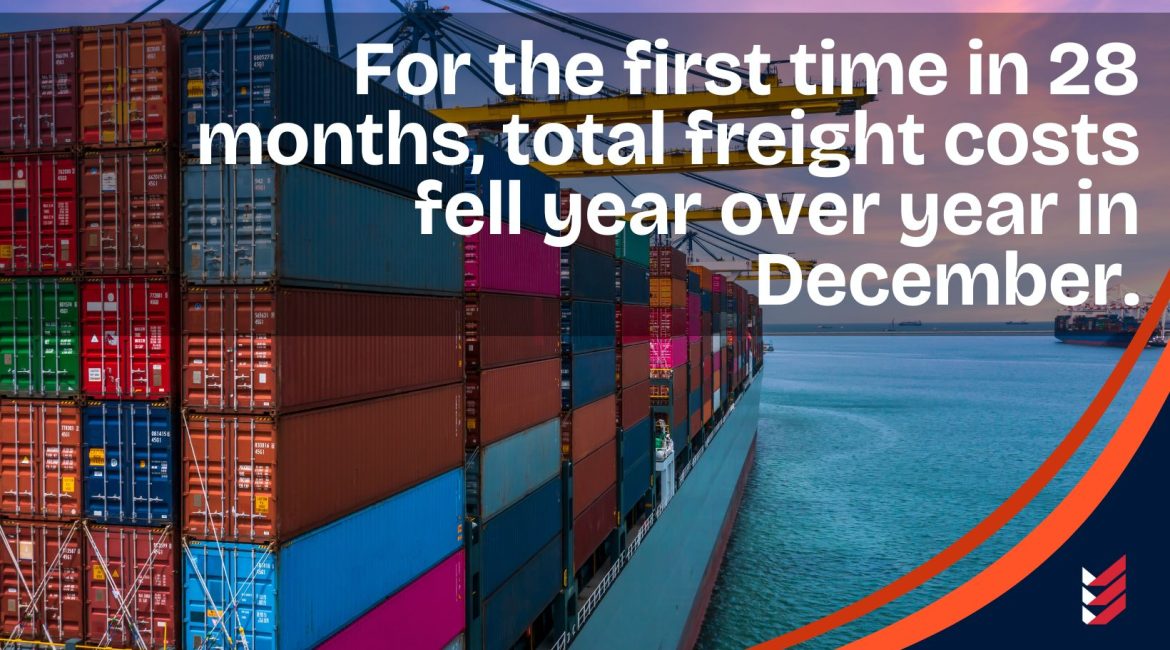According to a Thursday report from Cass Information Systems, freight costs fell year over year (y/y) in December for the first time in 28 months.
According to the Cass Freight cost fell Index report, total payments platform expenditures were down 4.3% year on year and 5.5% lower than in November. The index’s shipments component fell 3.9% year on year, implying that actual transportation rates were likely 0.4% lower during the month (down 2.2% sequentially and 5.3% seasonally adjusted).
Primary Driver of Decline
According to the report, lower truckload contract rates were the primary driver of the index’s decline during the month. The data set includes other modes of transportation, such as less-than-truckload, rail, and parcel, as well as fuel and accessorial charges, which adds noise to the numbers. Truckload accounts for more than half of the platform’s freight expenditures.
“Based on the normal seasonal pattern of this index, freight cost fell rates are on track to fall 5% in 2023,” ACT Research’s Tim Denoyer said. “With loose market conditions and some welcome relief in diesel prices, the actual drop is likely to be much larger.”
Analysts have been dialing in expectations and picking likely winners and losers for the fourth-quarter earnings season, which begins next week. While some analysts have noted a slight improvement in key indicators, the consensus is that TL contract rates saw some pressure in the fourth quarter and will likely be down y/y by mid- to high-single-digit percentages through the first half of 2023.
However, most forecasts point to carriers’ fundamentals firming by midyear, resulting in a potential upcycle in the second half. The theory is that persistent cost pressures on carriers and regulatory capacity impediments such as AB5 will result in a steady exodus of operators, removing downward pressure on rates. Furthermore, the third-quarter weakness in demand and pricing has accelerated in the fourth quarter, resulting in easier y/y comps for the group later this year.
Freight Costs Remain High
While shippers are beginning to see some savings, freight costs remain significantly higher than before the pandemic. Cass’ expenditures subindex increased by 23% for the full year 2022, following a 38% increase in 2021.
Cass’ Truckload Linehaul index, which excludes fuel and add-ons, increased 1.7% yearly but fell 1% monthly. Linehaul rates fell for the seventh consecutive month in December. The report also stated that y/y comps are increasing, with December’s result being 5% lower than January 2022.
Forecasting January’s Trends
“With a tougher comparison in January, this index is likely to fall on a year-over-year basis,” Denoyer added. “New truckload contracts are generally being renewed with significant rate reductions, but this pressure will be offset partly by strong trends in spot rates since Thanksgiving, which have held most of their gains even as drivers have generally returned from the holiday break.”
Even though he stated that the TL market is “transitioning from the late-cycle stage to the bottoming stage” and that tightening in the spot-contract spread is “a key signpost of this new stage of the cycle, even green shoots of a new rate cycle,”
Shipments fell 3.3% from November but increased 1.2% seasonally adjusted.
“Normal seasonality would have shipments back in positive territory y/y in 1H’23, but sharp declines in imports, particularly into the West Coast, suggest near-term trends may soften further,” Denoyer said.
